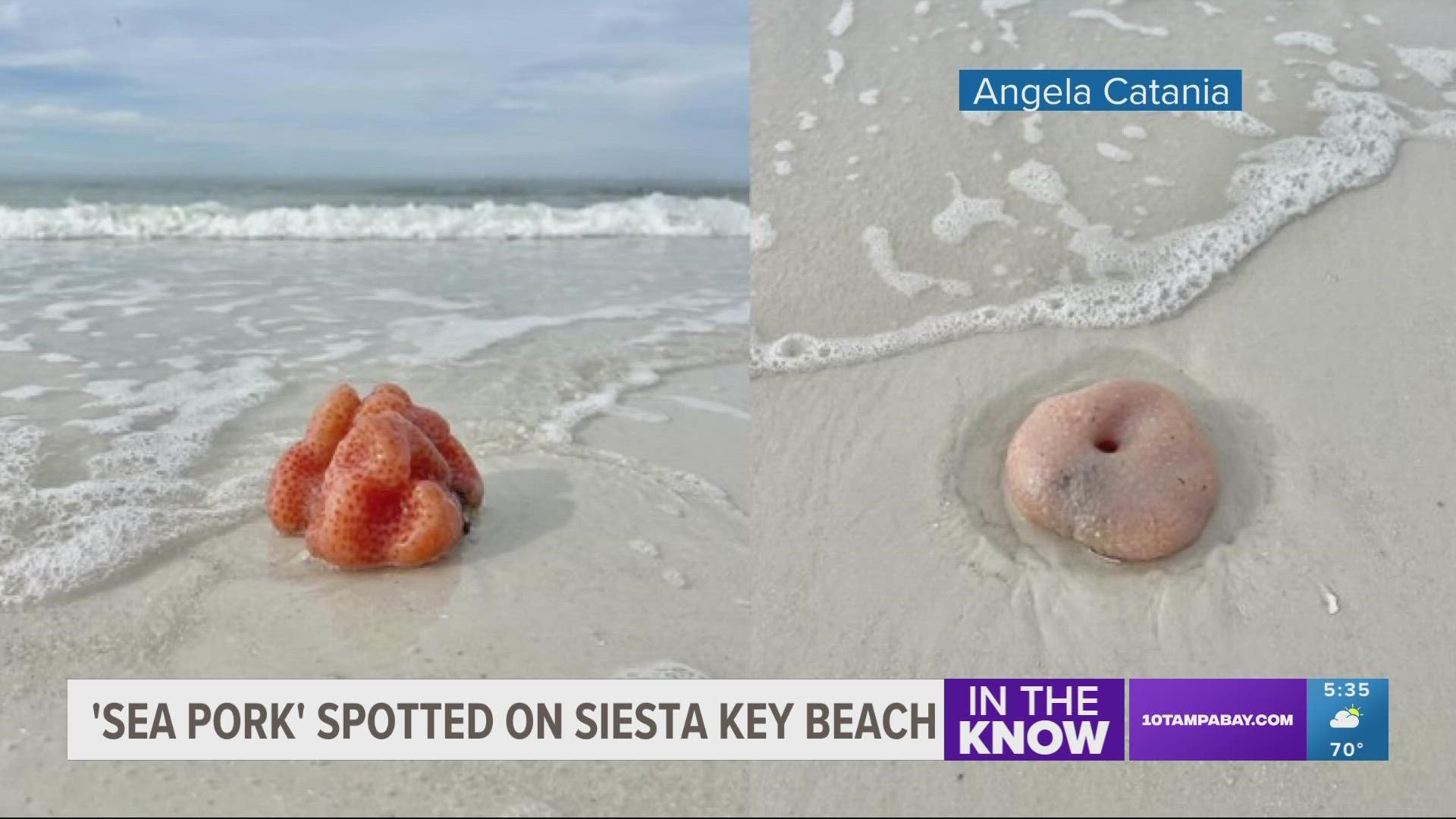SIESTA KEY, Fla. — People taking their usual stroll along Siesta Key Beach this week spotted something unfamiliar along the white crystal sand – hundreds of gelatinous, alien-like blobs.
They're called sea porks, and they're some of the most highly-evolved marine invertebrates.
Sea porks, also called sea squirts or tunicates, are spineless organisms that act like little filters, siphoning nutrients and bacteria from the water before squirting it back out.
There are about 3,000 different types of sea porks, ranging in size, shape and color, according to Smithsonian Ocean. The ones seen on Siesta varied in color from red-orange to beige.
They're called tunicates because of their outer covering – or "tunic"– that protects the animal from predators like sea stars and fish, Smithsonian Ocean researchers said. The "sea squirt" nickname comes from the fact that the animals contract their muscles and shoot out water when alarmed by sudden movement.
Some say the puzzling (and gross) "sea pork" name came from someone who thought the animals resembled slabs of pig fat.
Sea porks like to attach to hard surfaces and can be spotted on rocks, dead coral or the underside of boats.
So, why were they washed up on Siesta Key Beach?
The winds from Tropical Storm Nicole are likely to blame. Once Nicole moved north of the Tampa Bay area, the winds shifted onshore Thursday and continued blowing toward the coast into Saturday morning, according to 10 Tampa Bay Meteorologist Grant Gilmore.
The tides were also running higher than normal, which helped wash things ashore.
"The rough seas caused by Nicole's winds also helped churn up the water, creating a lot of turbulence – just like in an airplane – and upwelling which draws up a lot of things from the ocean floor and brings them to the surface," he explained.

